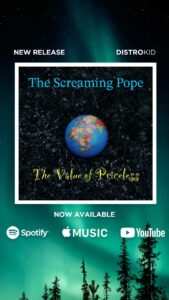
Dayton Duncan and Ken BurnsPhoto: Evan Barlow
Writer and producer Dayton Duncan has worked with documentary filmmaker Ken Burns for nearly 30 years. Their acclaimed explorations of American history and culture include The West, Lewis & Clark and The National Parks: America’s Best Idea. Their most recent collaboration, Country Music, an eight-episode series for PBS, chronicles a musical genre that is often misunderstood or underrated, even by those who claim to love it. The companion book, Country Music: An Illustrated History, provides an elegant encapsulation of the material in the documentary, detailing country’s evolution and emergence as a musical form with broader reach and inclusion than many might think.
 Duncan answered questions by email.
Duncan answered questions by email.
What are the central themes you hope readers will take away from Country Music?
In our series, we approach country music as a uniquely American artform, and in telling its history several themes emerged.
What makes it uniquely American is that, like the nation and its people, it sprang from many roots. It’s never been one style of music, it’s always been a mixture: Anglo-Celtic ballads and fiddle tunes, African American blues and spirituals, church hymns and gospel songs, songs sung in fields and rail yards and on the border with Mexico and the open ranges of the West, in traveling minstrel shows and medicine shows. Its embrace is much broader than the common stereotype. In the course of the 20th century, from those diverse roots would spring many branches, again exploding the stereotype that country music could be confined into one simple category with clearly defined boundaries.
And at its best, it is art of the highest caliber. It takes the most universal human emotions and experiences — love and loss, happiness and hardship, heartbreak and the hope of redemption — and distills them into songs, combining music and poetry into a delivery system that penetrates directly to your heart.
Did you discover any surprises during your research? I try to begin each project with Ken by stripping myself of any preconceptions of what the story is, and through the research allow it to tell me what the stories are that demand to be told. So even though I began the research more than eight years ago already somewhat familiar with the contours of country music, the process was one of continual surprises.
As a writer, I was particularly drawn to the stories behind the songs, hearing great songwriters explain what inspired them to create their masterpieces. Virtually all of those stories were surprises to me. I never knew, for instance, that Dolly Parton wrote “I Will Always Love You” as a way to persuade Porter Wagoner to let her go off on a solo career. My wife Dianne and I had always loved Kathy Mattea’s song “Where’ve You Been,” but I had no idea it came from the last words her husband Jon Vezner’s grandmother said to his grandfather. I was not prepared for the deep, emotional circumstances behind Vince Gill’s “Go Rest High on That Mountain.”
Are there individuals who loom larger in your narrative about country music than they have in previous accounts? I’m proud that we paid attention to the Maddox Brothers and Rose, whose Joad-like journey to California during the Depression ultimately ended up with them being known (and rightfully so) as “The Most Colorful Hillbilly Band in the World,” making music that was proto-rockabilly. I think the collection of what I considered the “Texas Bohemians in Nashville” — Townes Van Zandt, Guy Clark and Rodney Crowell especially, who were as interested in creating great art as in commercial success — got more space than other histories of the music have usually provided.
Traditionalists and purists have long criticized commercial country for being too close to rock and pop. What’s your take on this perennial complaint? One of the first things I realized is that there’s always been a tension between the traditionalists and those who want to stretch the boundaries of country music. Traditionalists didn’t like Bill Monroe reinterpreting Jimmie Rodgers’ “Muleskinner Blues.” Traditionalists also objected when Elvis showed up at the Opry and sang his reinterpretation of Monroe’s “Blue Moon of Kentucky.” Some thought that Ricky Skaggs was committing sacrilege when he added electric guitars and drums to bluegrass. But that’s what artists do: They push boundaries, borrow from something old to make something new.
To read an uncut version of this interview — and more local book coverage — visit Chapter16.org, an online publication of Humanities Tennessee.






